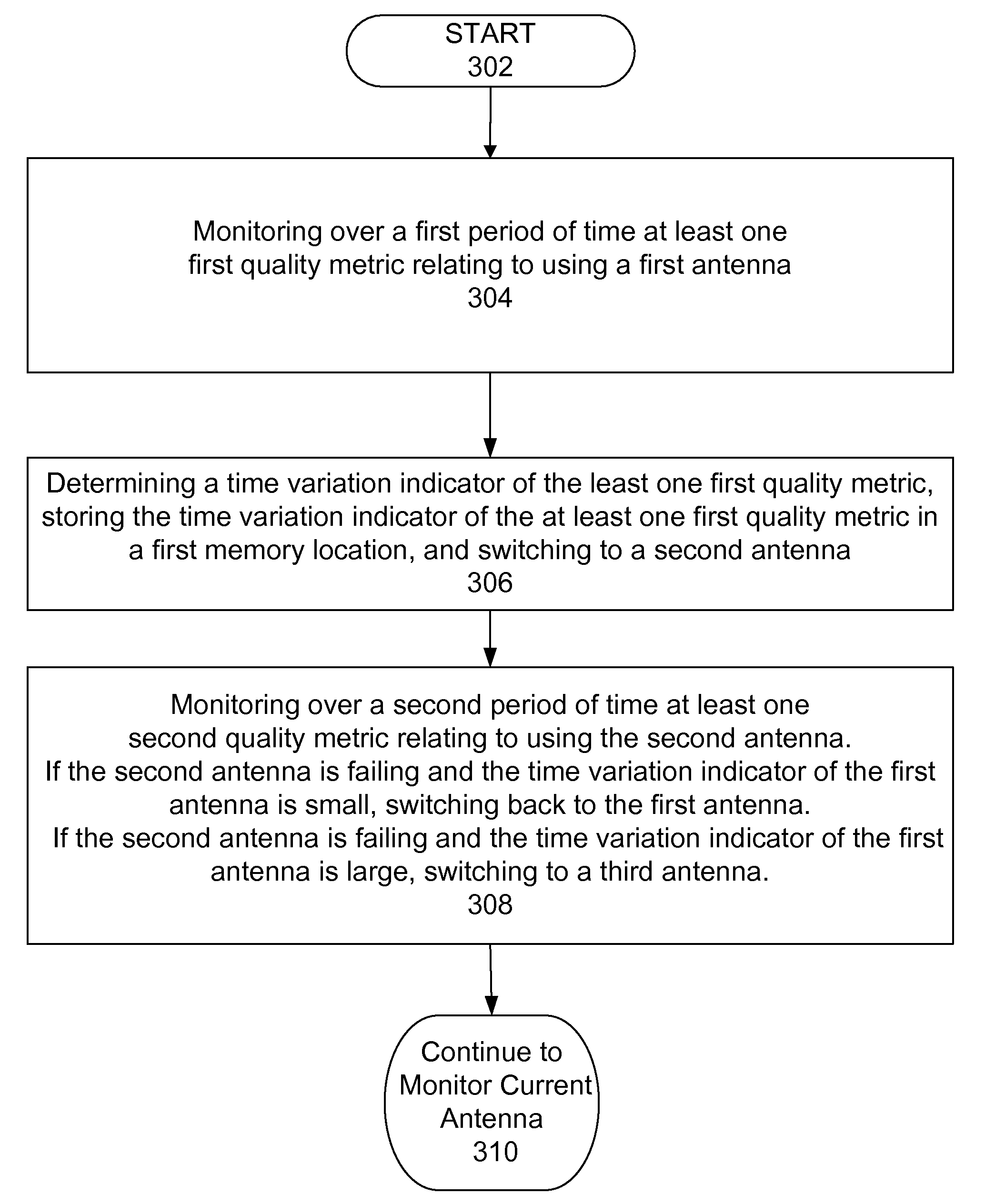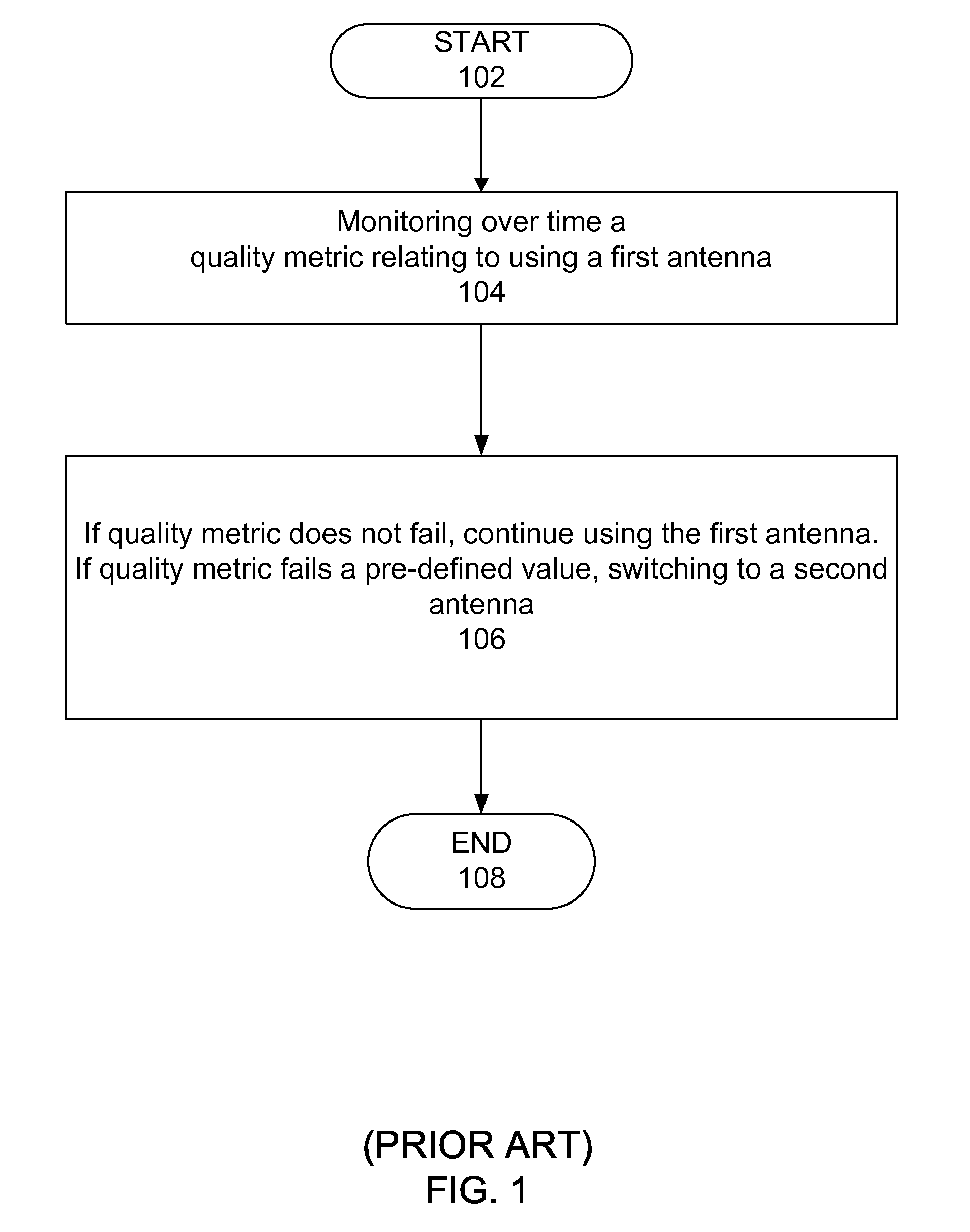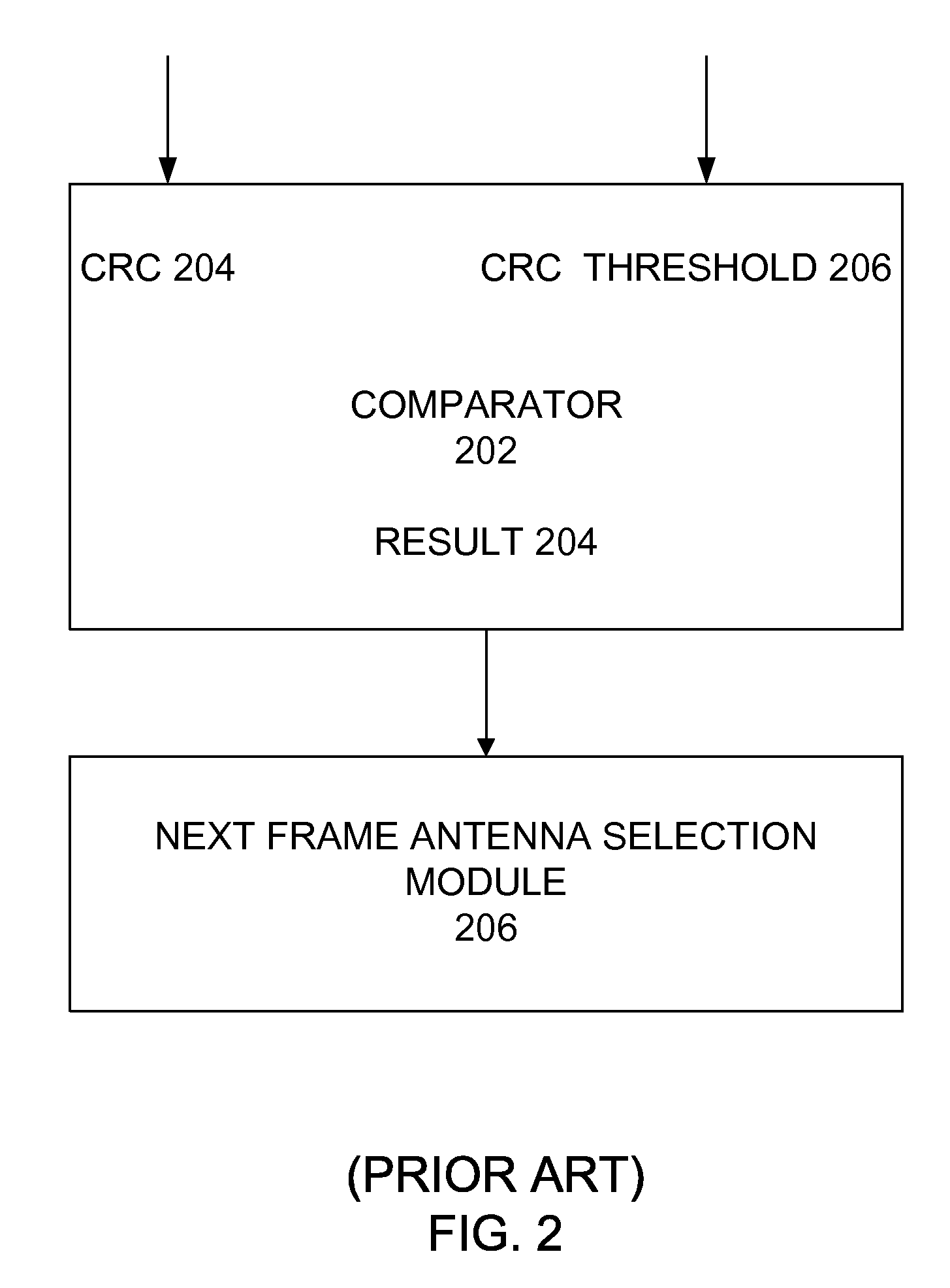Intelligent Iterative Switch Diversity
a switch diversity and intelligent technology, applied in the field of intelligent iterative switch diversity, can solve the problems of long service outage interval of mobile station device, poor mobile station device performance, and difficulty for mobile station device to determine which antenna offers the best channel without actually using the antenna
- Summary
- Abstract
- Description
- Claims
- Application Information
AI Technical Summary
Benefits of technology
Problems solved by technology
Method used
Image
Examples
Embodiment Construction
[0036]The invention provides a method and a system to more closely optimize the selection of antennae in wireless communication systems. Various embodiments of the invention can be applied to communication applications, biological applications, medical applications, electronic applications, and any other applications where a better antenna or channel selection algorithm can be beneficially used in communications. In this specification, drawings, and claims, any instance of the term radio-frequency is defined as any electromagnetic signal frequency in the frequency range of 50,000 to 100,000,000,000 cycles per second (Hertz).
[0037]Other terms used below and in the figures are defined as follows. Thressw—This is the switch threshold. This is the point at which degradation of antenna or channel condition (e.g., determined by at least one metric of quality) indicates that a switch is necessary. The antenna or channel is still usable until its quality falls below the failure threshold. T...
PUM
 Login to View More
Login to View More Abstract
Description
Claims
Application Information
 Login to View More
Login to View More - R&D
- Intellectual Property
- Life Sciences
- Materials
- Tech Scout
- Unparalleled Data Quality
- Higher Quality Content
- 60% Fewer Hallucinations
Browse by: Latest US Patents, China's latest patents, Technical Efficacy Thesaurus, Application Domain, Technology Topic, Popular Technical Reports.
© 2025 PatSnap. All rights reserved.Legal|Privacy policy|Modern Slavery Act Transparency Statement|Sitemap|About US| Contact US: help@patsnap.com



